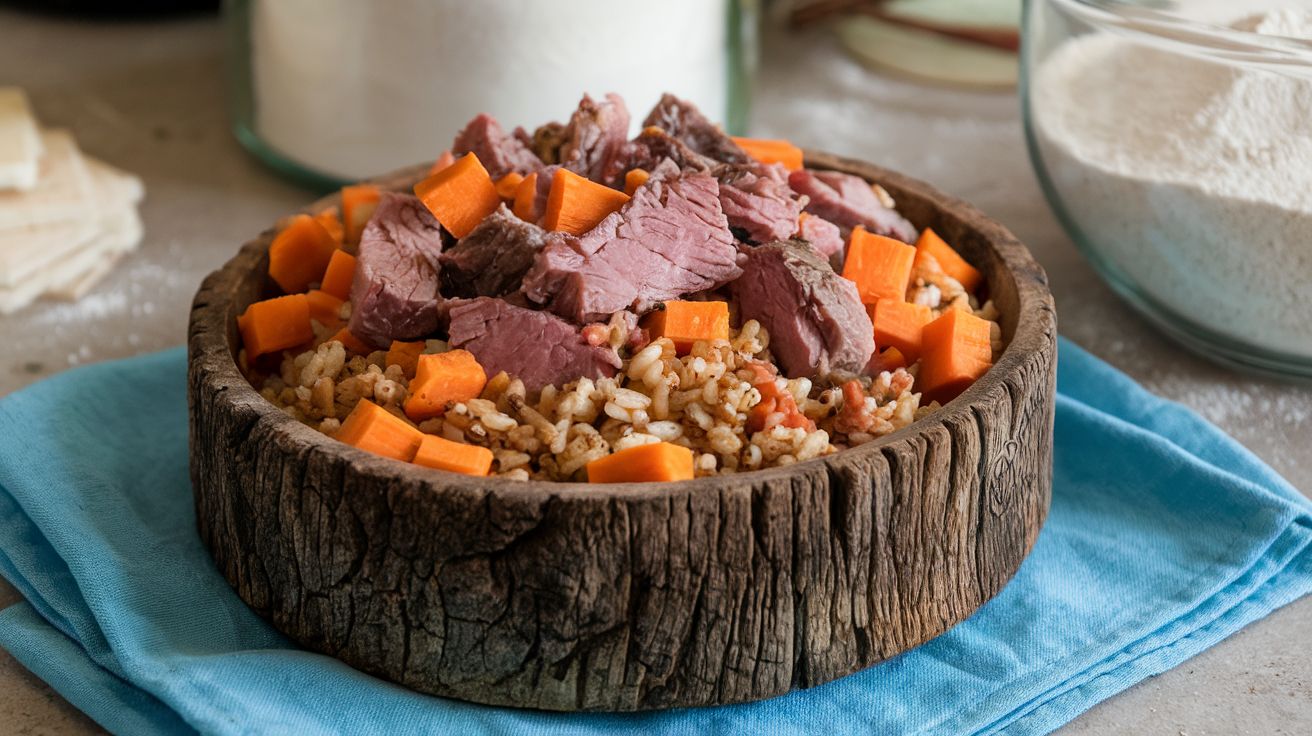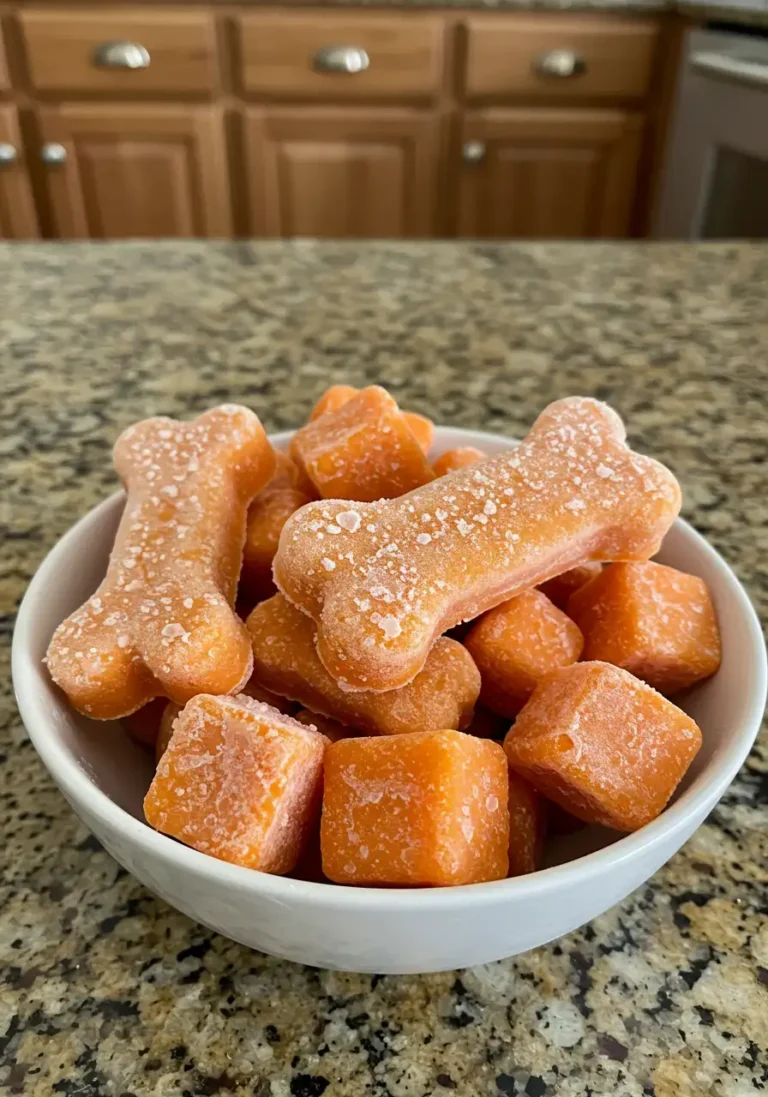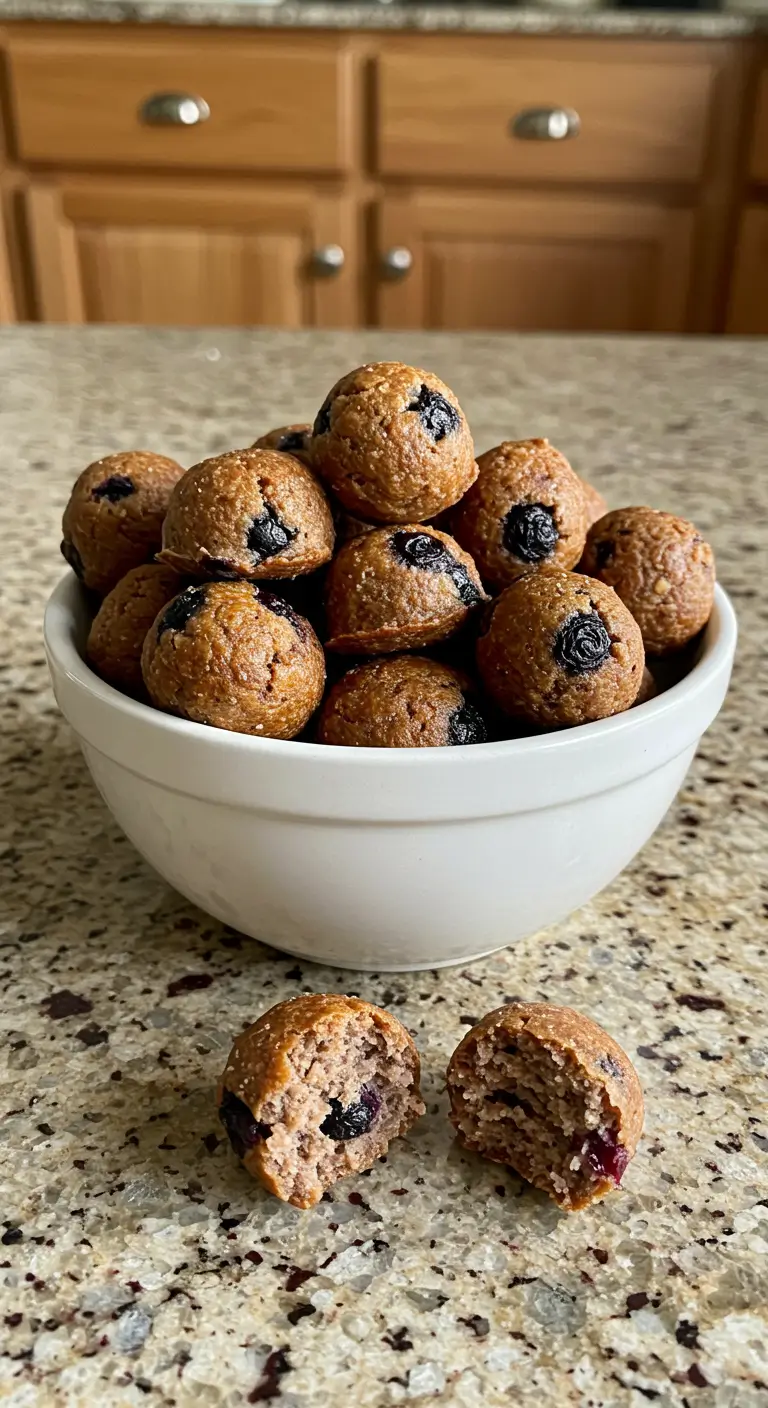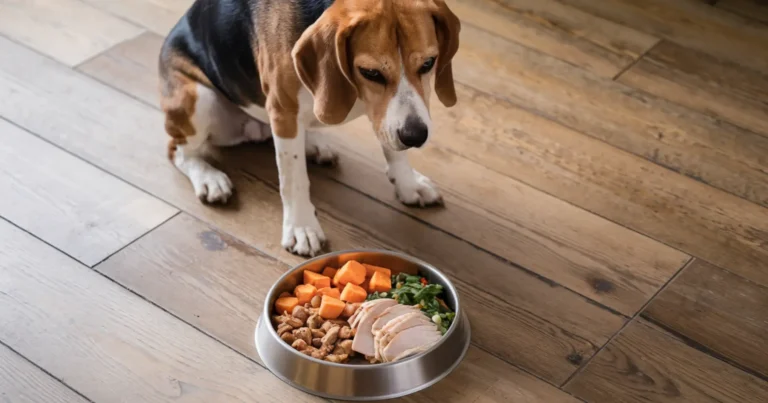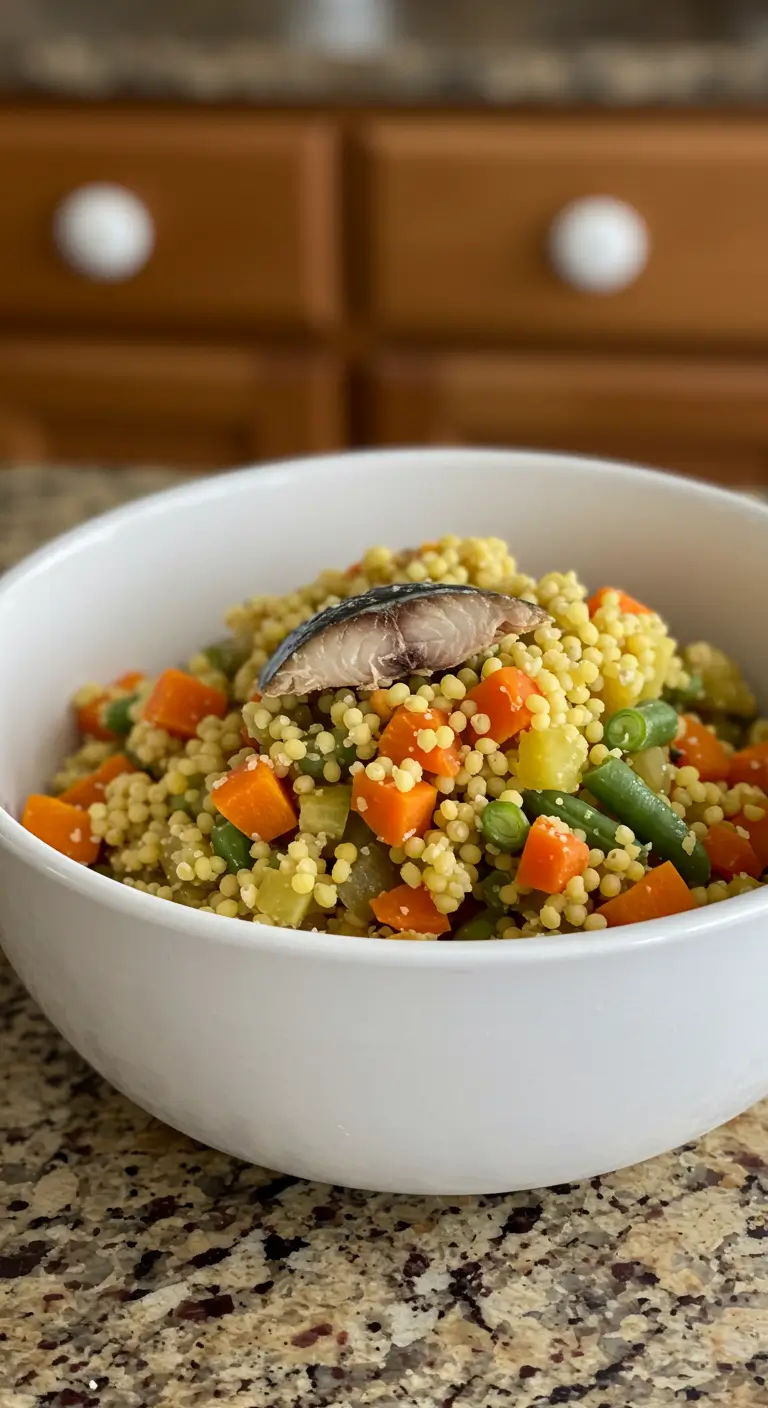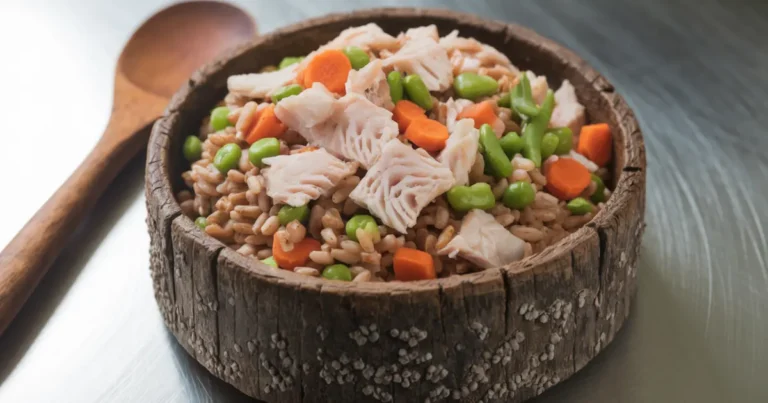Easy Lamb Dog Food Recipe: 5 Simple Steps
Do you realize that your dog deserves better than canned mystery meat? If you’ve been eyeing those expensive premium dog foods and wondering if you could make something just as nutritious (and way cheaper) at home, you’re in the right place. This lamb dog food recipe isn’t just another Pinterest experiment; it’s a game-changer for pups who need high-quality protein and owners who want complete control over what goes in their dog’s bowl.
I’ve been making homemade dog food for three years now, and let me tell you, the difference in my dogs’ energy levels and coat shine is incredible. Plus, there’s something deeply satisfying about knowing exactly what your furry family member is eating. Real food prepared with love, no strange preservatives or fillers.
Table of Contents
Why Choose Lamb for Your Dog’s Homemade Meals?
Lamb often gets overlooked in favor of chicken or beef, but it’s actually a nutritional powerhouse for dogs. Lamb provides complete amino acids that support muscle development and maintenance, making it perfect for active adult dogs. The protein in lamb is highly digestible, which means your pup gets maximum nutritional benefit from every bite.
Unlike some proteins that can trigger sensitivities, lamb tends to be gentler on most dogs’ digestive systems. It’s also rich in essential fatty acids that promote healthy skin and a glossy coat; your dog will literally glow from the inside out.
If you’re interested in exploring other protein options for your homemade dog food recipes, check out our easy turkey dog food recipe for a leaner alternative, or try our easy pork dog food recipe for dogs who need variety in their diet.
Nutritional Benefits of Lamb
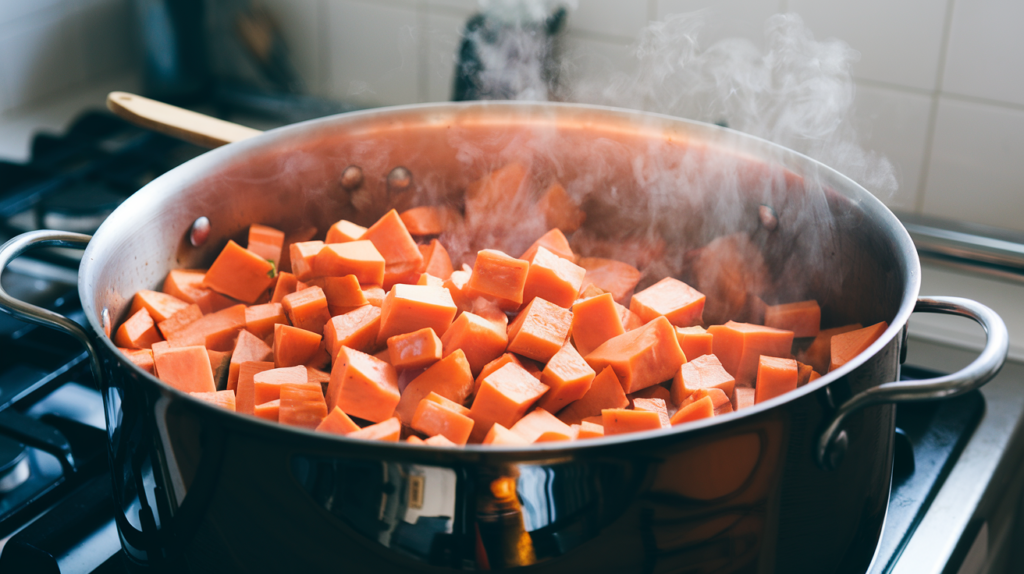
| Nutrient | Benefit |
|---|---|
| High-quality protein | Supports muscle growth and repair |
| Iron | Prevents anemia and boosts energy |
| Zinc | Promotes immune system health |
| B vitamins | Supports nervous system function |
| Omega-3 fatty acids | Improves coat shine and skin health |
The beauty of this homemade lamb dog food recipe lies in its simplicity. You’re not just feeding your dog—you’re investing in their long-term health with ingredients you can pronounce and trust. This lamb dog food recipe delivers complete nutrition without the guesswork of commercial foods.
Essential Ingredients for Nutritious Lamb Dog Food
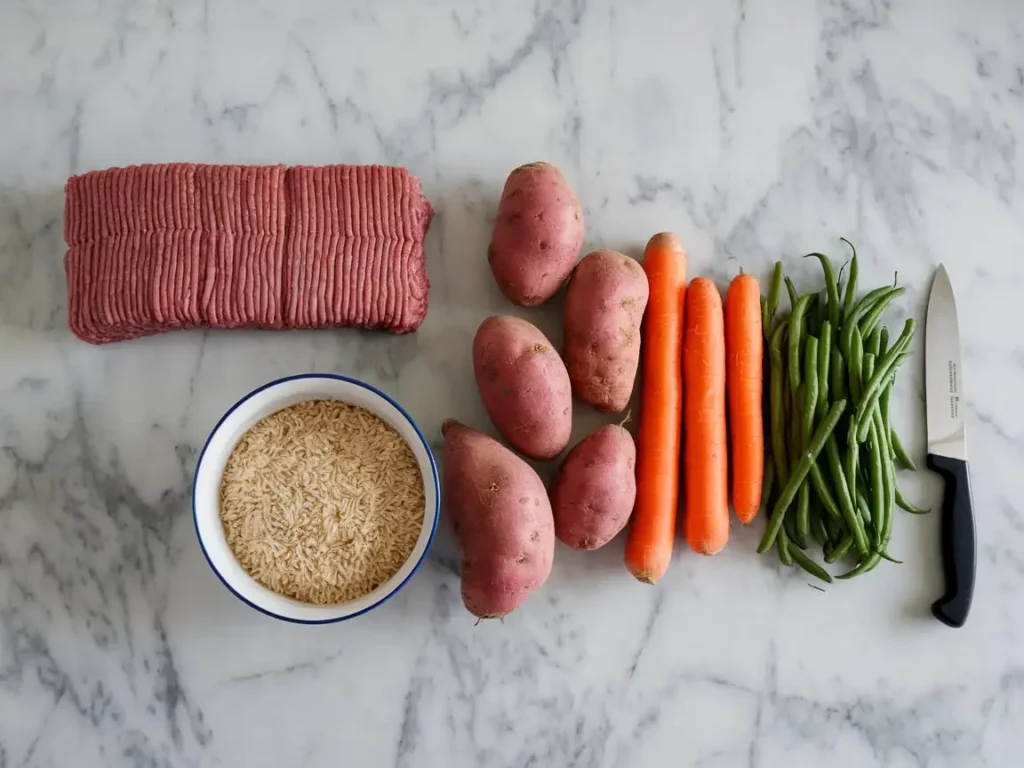
Before we get cooking, let’s talk about what makes this DIY lamb dog recipe so special. Quality ingredients make quality food, and your dog will taste the difference immediately. Every component in this lamb dog food recipe serves a specific nutritional purpose.
Primary Ingredients
2 pounds of ground lamb: Choose lean ground lamb that has between 15 and 20 percent fat. Too fatty, and you’ll have digestive issues; too lean, and you’ll miss out on essential fatty acids. I always buy from my local butcher because the quality is consistently better than grocery store options.
Brown rice (2 cups, uncooked): This provides complex carbohydrates for sustained energy. Compared to white rice, brown rice has more nutrients and fiber and is easier to digest. Some people swear by quinoa, but honestly? Dogs also adore brown rice, which is more affordable.
2 large sweet potatoes: Packed with vitamins, fiber, and beta-carotene, these orange powerhouses are a powerhouse. They add natural sweetness that dogs go crazy for, plus they help with digestive health.
Supporting Ingredients
Carrots (3 medium): Carrots provide vitamins A and K, plus they add a satisfying crunch that helps clean your dog’s teeth naturally. Pro tip: dice them small enough that your dog actually chews them instead of inhaling them whole 🙂
Green beans (1 cup, fresh or frozen): Low in calories but high in vitamins, green beans add fiber and help dogs feel full without adding excess weight. They’re like nature’s diet food for pups.
Olive oil (2 tablespoons): This healthy fat helps with nutrient absorption and gives your dog’s coat that enviable shine. Don’t overdo it, though, too much oil can cause stomach upset.
Calcium supplement (1 teaspoon): Since we’re not using bones, we need to add calcium separately. You can use ground eggshells, bone meal, or a commercial calcium supplement designed for dogs.
Step-by-Step Lamb and Barley Dog Meal Preparation
Now for the fun part, actually making this nutritious lamb dog food! The process is straightforward, but timing matters for the best results. The entire process of making this lamb dog food takes roughly forty-five minutes.
For those looking to expand their homemade dog food repertoire, our ultimate beef dog treats recipe makes perfect training rewards to pair with this lamb dog food recipe.
Step 1: Prep Your Ingredients
Start by washing and chopping all your vegetables. Dice the sweet potatoes into half-inch cubes—this size cooks evenly and is perfect for most dogs to chew comfortably. Cut carrots into similar-sized pieces, and trim the green beans into bite-sized segments.
Cook your brown rice according to package directions, but use low-sodium chicken or beef broth instead of water for extra flavor. Your dog will notice the difference, trust me. You can begin preparing the vegetables while the rice cooks. This lamb dog food recipe method ensures maximum flavor absorption.
Step 2: Cook the Vegetables
In a large pot, steam the sweet potatoes and carrots together for about 15 minutes until they’re fork-tender but not mushy. You want them soft enough to digest easily but firm enough to provide some texture. Add the green beans in the last 5 minutes, they cook quickly and you don’t want them turning to mush.
Here’s a rookie mistake I made early on: overcooking the vegetables. Mushy vegetables lose nutritional value and honestly, they look pretty unappetizing. Keep them slightly firm for the best nutritional bang for your buck.
Step 3: Brown the Lamb
Heat a large skillet over medium-high heat while your vegetables are steaming. Using a wooden spoon, break up the ground lamb after adding it. Cook until all of the pink is gone and it is thoroughly browned. This usually takes 8-10 minutes for 2 pounds of meat.
Don’t drain the fat unless there’s an excessive amount. That natural fat contains valuable nutrients and flavor that your dog needs. However, if your lamb is particularly fatty and there’s more than a couple of tablespoons of rendered fat, go ahead and drain some off. This step is crucial for a successful lamb dog food recipe.
Step 4: Combine and Season
In your largest mixing bowl, combine the cooked lamb, steamed vegetables, and cooked brown rice. Drizzle with olive oil and mix thoroughly. The mixture should hold together but not be greasy or wet.
Add your calcium supplement and mix again. This is crucial; homemade dog food without proper calcium supplementation can lead to serious health issues over time. Don’t skip this step, even if it seems insignificant. This lamb dog food recipe requires a proper calcium balance for optimal nutrition.
Step 5: Cool and Store
Let the mixture cool completely before serving or storing. Hot food can burn your dog’s mouth and also creates condensation in storage containers, which leads to spoilage.
This lamb dog food recipe makes approximately 8-10 cups of food, which should last a medium-sized dog about 4-5 days when stored properly in the refrigerator. For longer storage, portion into meal-sized containers and freeze for up to three months. The batch size makes this lamb dog food recipe perfect for meal prep.
Portion Sizes and Feeding Guidelines
Getting portions right is crucial; too little and your dog stays hungry, too much and you’re dealing with weight gain and digestive issues. A good starting point is about 1/2 to 3/4 cup per 10 pounds of body weight per day, but every dog is different.
Feeding Schedule Recommendations
| Dog Weight | Daily Amount | Meals Per Day |
|---|---|---|
| 10-20 lbs | 1-2 cups | 2 meals |
| 20-40 lbs | 2-3 cups | 2 meals |
| 40-60 lbs | 3-4 cups | 2 meals |
| 60+ lbs | 4-5 cups | 2-3 meals |
Monitor your dog’s weight and energy levels for the first few weeks. If they’re gaining weight, reduce portions slightly. If they seem hungry all the time or are losing weight, increase portions gradually. It needs some attention, but it’s not very difficult.
Some dogs need more food during winter months or if they’re particularly active. Working dogs, for instance, might need 25-50% more calories than couch potato pups. Use common sense and adjust accordingly.
Storage Tips and Meal Prep Strategies
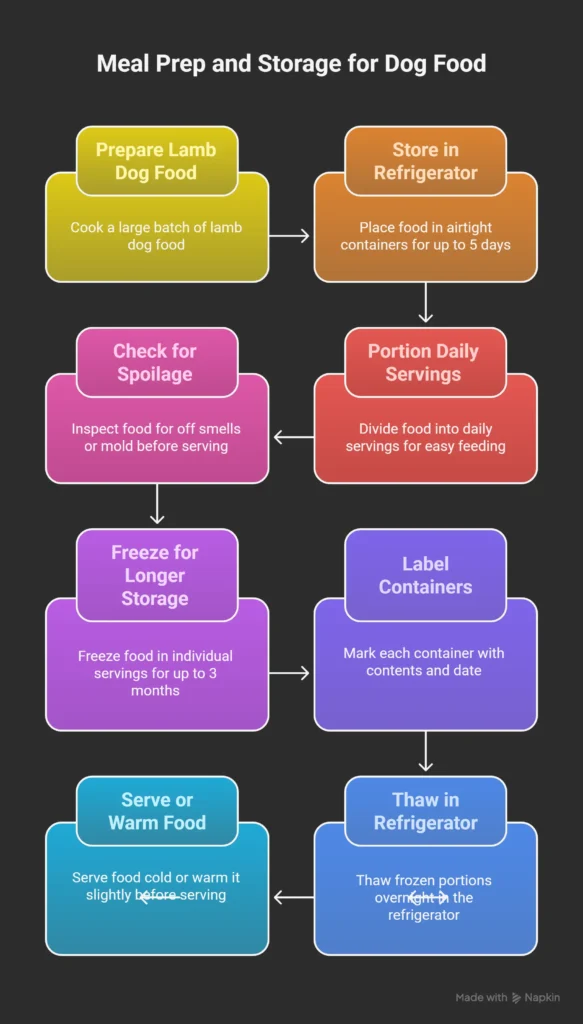
Meal prep isn’t just for fitness enthusiasts; it’s a lifesaver for busy dog parents, too! This homemade lamb dog food recipe is perfect for batch cooking and storing for the week ahead. Making a large batch of this lamb dog food recipe saves time and ensures consistency.
Refrigerator Storage
Store freshly made lamb dog food in airtight containers in the refrigerator for up to 5 days. Glass containers work best because they don’t retain odors and are easy to clean. Portion into daily servings to make feeding time easier and prevent waste. Proper storage keeps your lamb dog food recipe fresh and safe.
Always check for any off smells or visible mold before serving. Homemade dog food doesn’t have preservatives, so it spoils faster than commercial food. When in doubt, throw it out. Your dog’s health isn’t worth the risk. Fresh ingredients make this lamb dog food recipe safe and nutritious.
Freezer Storage
For longer storage, portion the cooled lamb and barley dog meal into individual servings using freezer-safe containers or zip-lock bags. Put the contents and date on the label of each container. Frozen homemade dog food stays good for up to three months. Freezing preserves the nutritional value of your lamb dog food recipe.
Never thaw frozen portions at room temperature; instead, do so in the refrigerator overnight. You can serve it cold or warm it slightly in the microwave, but always test the temperature before serving. Nobody likes a burnt tongue, especially not your dog! Safe thawing ensures your lamb dog food recipe maintains its quality.
Signs Your Dog Loves Their New Lamb Recipe
You’ll know this nutritious lamb dog food is a hit when you see these positive changes in your pup. Increased enthusiasm at meal time is usually the first sign that dogs who previously picked at their food suddenly become excited about dinner. The palatability of this lamb dog food recipe is undeniable.
Within 2-3 weeks, you should notice improved coat shine and softer fur. Many owners report their dogs’ breath smells better too, which is a nice bonus for those who enjoy puppy kisses. Consistent, well-formed stools indicate good digestive health and proper nutrient absorption. These benefits prove the effectiveness of this lamb dog food recipe.
Energy levels often improve after a few weeks on homemade food. Dogs who seemed sluggish on commercial food frequently become more playful and alert. It’s like watching them come alive again, honestly, it’s pretty amazing to witness. The transformation from this lamb dog food recipe is remarkable.
Cost Comparison: Homemade vs. Commercial
Let’s talk numbers because budget matters, especially when you’re feeding a large dog. This DIY lamb dog recipe costs approximately $12-15 to make and provides 8-10 cups of food, depending on where you shop and what ingredients you choose. The cost-effectiveness of this lamb dog food recipe is impressive.
Premium commercial dog food with similar protein content typically costs $3-5 per pound, which means you’d spend $24-40 for the same amount of food. You’re literally saving 50-60% by making it yourself, plus you know exactly what goes into every bite. This lamb dog food recipe delivers premium nutrition at a fraction of the cost.
The time investment is about 45 minutes for preparation and cooking, but you’re making nearly a week’s worth of food. That breaks down to less than 10 minutes per day, probably less time than you spend choosing which commercial food to buy at the pet store. The efficiency of this lamb dog food recipe is unmatched.
Transitioning Your Dog to Homemade Food
Don’t just swap your dog’s food overnight; that’s a recipe for digestive upset and a very unhappy pup. Gradual transition over 7-10 days gives your dog’s digestive system time to adjust to the new ingredients. This method works perfectly when introducing any lamb dog food recipe.
For the first two to three days, start by combining 25% of the new lamb dog food with 75% of their existing food. Then move to 50/50 for another 2-3 days, followed by 75% new food and 25% old food. Finally, switch to 100% homemade food. This gradual approach ensures success with your lamb dog food recipe transition.
Throughout the transition, keep an eye out for any indications of digestive distress. Loose stools or vomiting mean you’re moving too fast, back up a step, and slow down the process. While some dogs adjust more quickly than others, others require more time.
Common Mistakes to Avoid
After three years of making homemade dog food, I’ve made my share of mistakes. The biggest error is not adding calcium supplementation, which can lead to serious bone and joint problems over time. Commercial dog foods are required to meet specific nutritional standards, but homemade food is only as good as your recipe. Don’t compromise the nutritional integrity of your lamb dog food recipe.
Another common mistake is making the food too wet or too dry. The texture should be moist but not soggy, with ingredients that hold together without being mushy. If your mixture seems dry, add a tablespoon of low-sodium broth. If it’s too wet, cook off some moisture in a large skillet. Perfect texture is essential for a successful lamb dog food recipe.
Don’t forget to let the food cool completely before serving. I learned this lesson the hard way when my eager golden retriever burned his tongue on hot food. Now I always test the temperature with my finger before putting the bowl down. Safety first when serving your lamb dog food recipe!
My Final Thoughts on This Lamb Dog Food Recipe
Making homemade lamb dog food isn’t just about saving money or avoiding preservatives, it’s about taking control of your dog’s nutrition and health. This recipe gives you that control while being simple enough for busy pet parents to manage consistently. The simplicity of this lamb dog food recipe makes it perfect for beginners.
The look of pure joy on your dog’s face when they taste real, homemade food for the first time? Priceless. Plus, you’ll sleep better knowing exactly what nutrients your furry family member is getting. The relationship between you and your dog is strengthened in this win-win scenario. This lamb dog food recipe creates memorable mealtime moments.
Remember, consistency is key with homemade dog food. Don’t make it once and then go back to commercial food—your dog will notice the difference, and so will their health. Stick with it for at least a month to see the full benefits, and I guarantee you’ll be amazed at the transformation. Consistency with this lamb dog food recipe delivers lasting results.
Frequently Asked Questions
Can I substitute barley for brown rice in this lamb dog food recipe? Absolutely! A great substitute that offers comparable nutritional advantages is barley. Use the same quantity as brown rice, but increase cooking time by about 10 minutes since barley takes longer to cook. Some dogs actually prefer the chewier texture of barley. This substitution works perfectly in any lamb dog food recipe.
How long does homemade lamb dog food stay fresh? Properly stored in the refrigerator, this lamb dog food recipe stays fresh for 5 days maximum. In the freezer, it maintains quality for up to 3 months. Always check for off smells or visible mold before serving, and when in doubt, discard it. Proper storage ensures your lamb dog food recipe remains safe and nutritious.
Is this lamb recipe suitable for puppies? This recipe for lamb dog food is designed for dogs that are adults. Puppies have different nutritional requirements, including higher protein and fat content, plus specific calcium-to-phosphorus ratios for proper bone development. Consult your veterinarian before switching puppies to homemade food. This recipe for lamb dog food is great for adult dogs.
Can I add other vegetables to this DIY lamb dog recipe? Yes, but stick to dog-safe vegetables like peas, spinach, or broccoli (in small amounts). Steer clear of toxic foods like grapes, onions, and garlic. To preserve the right nutritional balance, add no more than 10% of the recipe as a whole. Additional vegetables can enhance your lamb dog food recipe’s nutritional profile.
What if my dog has food allergies? This lamb dog food recipe works well for dogs with chicken or beef allergies since lamb is a novel protein for most dogs. However, if your dog has grain allergies, substitute the brown rice with sweet potato or pumpkin. Always introduce new foods gradually and consult your vet about specific allergies. This lamb dog food recipe offers excellent allergy-friendly options.
How do I know if I’m feeding the right amount? Monitor your dog’s weight, energy levels, and body condition. You should be able to feel their ribs without pressing hard, and they should have a visible waist when viewed from above. Adapt serving sizes to your dog’s specific requirements. Active dogs need more calories than couch potatoes. Proper portioning ensures your lamb dog food recipe provides optimal nutrition.
References and Resources
For additional homemade dog food recipes and nutritional guidance, check out these helpful resources:
- 6 Best Homemade Meat Dog Food Recipes – Comprehensive guide to various meat-based recipes
Your Dog Tried It? Drop a Review Below!
There are no reviews yet. Be the first one to write one.

